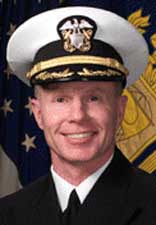a neoconservative, a Bohemian Grove and Trilateral Commission member, deep state politician, and former director of the CFR who was found guilty in absentia by the Kuala Lumpur War Crimes Commission in connection with the torture events of Abu Ghraib. Not his biggest crime by a long shot, but as a deep state big wig, he gets immunity on most of his crimes. The official US government report on the attacks of September 11, 2001, altered and obscured the testimony of US Secretary of Transportation Norman Mineta in a manner which absolves former Vice President Dick Cheney of failing to defend the Pentagon. The former head of the Star Wars missile defense program under Presidents Ford and Carter, Dr. Robert Bowman, said that the official version of 9/11 is a conspiracy theory and his main suspect for the architect of the attack is Vice President Dick Cheney.
American Deep State scholar, Dr. James Fetzer, a retired professor at the Univ. of Minnesota agreed in a phone interview with Press TV on 25 July 2015. Cheney’s company, Halliburton, profited $39.5 Billion in the from the war in Iraq and continues to rake in large government contracts in Afghanistan. KBR, a subsidiary of Halliburton won several no-bid contracts while he was in office including Hurricane Katrina. When Cheney left office, his approval rating stood at a staggeringly low 13 percent. Deborah Palfrey, the DC Madam, strongly insinuated that Dick Cheney was possibly involved in the DC Madam scandal, and this could have been one of the primary reasons why she was murdered. Seymour Hirsch disclosed that Cheney was running “an executive assassination ring” from his office in the White House when VP.
In the last section of David Ray Griffin’s book, ‘Bush And Cheney: How They Ruined America And The World‘, (a little more than 25%) is devoted to “9/11: A Miraculous Day.” Herein he explains why George W. Bush and Dick Cheney should not be trusted on 9/11. They did not want an investigation into the September 11 attacks; wanted the public to just trust them. They were eventually forced into an investigation by public pressure; originally named Henry Kissinger to head it (don’t laugh – ha! ha!); rigged its makeup and had Philip Zelikow, arch neo-con and Bush insider, appointed its Executive Director. In short, they did everything possible to prevent an honest investigation. And we know that the result was The 9/11 Commission Report that is a piece of legerdemain on a par with The Warren Commission Report. In other words, a cover-up.
Griffin shows that “Bush and Cheney lied about their activities on 9/11” and that their relationship to the subsequent anthrax attacks, a key motivator for The Patriot Act and “the war on terror,” suggest that their administration was the source of those attacks and therefore the 9/11 attacks. (see Graeme MacQueen’s The 2001 Anthrax Deception). Griffin further notes how declassified official accounts refute “central features of the Bush-Cheney account of 9/11.”
The most succinct statement of his misdeeds comes from “The People Vs. Dick Cheney,” a 2007 article by Wil S. Hylton. The piece recounts how Cheney undercut the CIA by instructing subordinates in that agency to stovepipe raw intelligence directly to his office. He also worked with Donald Rumsfeld to establish an alternative intelligence agency within the Pentagon. Both of these actions directly contributed to the dis-information that informed the decision to go to war. Hylton then lays out his most powerful argument:
(1) During the several months preceding the March 2003 invasion of Iraq, and thereafter, the vice president became aware that no certain evidence existed of weapons of mass destruction in Iraq, a fact articulated in several official documents, including: (a) A report by the Pentagon’s Defense Intelligence Agency, concluding that “there is no reliable information on whether Iraq is producing and stockpiling chemical weapons, or where Iraq has–or will–establish its chemical warfare agent production facilities.” (b) A National Intelligence Estimate, compiled by the nation’s intelligence agencies, admitting to “little specific information” about chemical weapons in Iraq. (c) A later section of the same NIE, admitting “low confidence” that Saddam Hussein “would engage in clandestine attacks against the U.S. Homeland,” and equally “low confidence” that he would “share chemical or biological weapons with al-Qa’ida.” (d) An addendum by the State Department’s Bureau of Intelligence and Research, asserting that Hussein’s quest for yellowcake uranium in Africa was “highly dubious” and that his acquisition of certain machine parts, considered by some to be evidence of a nuclear program, were “not clearly linked to a nuclear end use.” (e) A report by the United States Department of Energy, stating that the machinery in question was “poorly suited” for nuclear use.
(2) Despite these questions and uncertainties, and having full awareness of them, the vice president nevertheless proceeded to misrepresent the facts in his public statements, claiming that there was no doubt about the existence of chemical and biological weapons in Iraq and that a full-scale nuclear program was known to exist, including: (a) March 17, 2002: “We know they have biological and chemical weapons.” (b) March 19, 2002: “We know they are pursuing nuclear weapons.” (c) March 24, 2002: “He is actively pursuing nuclear weapons.” (d) May 19, 2002: “We know he’s got chemical and biological…we know he’s working on nuclear.” (e) August 26, 2002: “We now know that Saddam has resumed his efforts to acquire nuclear weapons… Simply stated, there is no doubt that Saddam Hussein now has weapons of mass destruction. There is no doubt that he is amassing them to use against our friends, against our allies, and against us.” (f) March 16, 2003: “We believe he has, in fact, reconstituted nuclear weapons.”
(3) At the same time, despite overwhelming skepticism within the government of a link between Iraq and Al Qaeda–resulting in the conclusion of the 9/11 Commission that “no credible evidence” for such a link existed, and the CIA’s determination that Hussein “did not have a relationship” with Al Qaeda–the vice president continued to insist that the relationship had been confirmed, including: (a) December 2, 2002: “His regime has had high-level contacts with Al Qaeda going back a decade and has provided training to Al Qaeda terrorists.” (b) January 30, 2003: “His regime aids and protects terrorists, including members of Al Qaeda. He could decide secretly to provide weapons of mass destruction to terrorists for use against us.” (c) March 16, 2003: “We know that he has a long-standing relationship with various terrorist groups, including the Al Qaeda organization.” (d) September 14, 2003: “We learned more and more that there was a relationship between Iraq and Al Qaeda that stretched back through most of the decade of the ’90s, that it involved training, for example, on biological weapons and chemical weapons.” (e) October 10, 2003: “He also had an established relationship with Al Qaeda–providing training to Al Qaeda members in areas of poisons, gases, and conventional bombs.” (f) January 9, 2004: “Al Qaeda and the Iraqi intelligence services…have worked together on a number of occasions.” (g) January 22, 2004: “There’s overwhelming evidence that there was a connection between Al Qaeda and the Iraqi government” (h) June 18, 2004: “There clearly was a relationship. It’s been testified to. The evidence is overwhelming.”
The piece also charges that “as the war devolved into occupation, the vice president again sabotaged the democratic system, developing back channels into the Coalition Provisional Authority, a body not under his purview, to remove some of the most effective staff and replace them with his own loyal supplicants — undercutting America’s best effort at war in order to expand his own power.”
9/11 Complicity and Cover Up
Dick Cheney responded to the 9/11 attacks by using devious means to install a small cabal of lawyers – most notoriously John Yoo – who proceeded conspiratorially in the next weeks to exclude their superiors, while secretly authorizing measures ranging from warrantless surveillance and detention to torture. Some of these were measures which Cheney and Rumsfeld had previously been preparing for almost two decades, as central figures in the secret agency planning for so-called Continuity of Government (COG), a shadow government that replaced the constitutional government. It was revealed in the 1980s that these plans aimed at granting a president emergency powers, uncurbed by congressional restraints, to intervene abroad, and also to detain large numbers of those who might protest such actions.
On 9/11, the 9/11 Report confirms, COG was implemented. Cheney promptly ordered the three top figures in the Justice Department out of Washington to a designated COG site buried deep underground. As a consequence, since 9/11 we have seen warrantless surveillance, suspension of habeas corpus, and the militarization of homeland security, on an unprecedented scale that is not just illegal but an erasure of rights specified in the U.S. constitution. In 2004 two authors, James Mann and James Bamford, wrote that in the 1980s two central figures guiding Oliver North in the Doomsday Project (the secret program in charge of the COG) planning , which Mann called “extralegal and extraconstitutional,” had been Donald Rumsfeld and Dick Cheney.
Cheney was also a key member of the Project for a New American Century, a Neo-Conservative think tank whose members also included Donald Rumsfeld, Jeb Bush and Paul Wolfowitz. In September 200, PNAC released their report entitled, ‘Rebuilding America’s Defenses’. In it, they declare that, “the process for transformation, even if it brings revolutionary change, is likely to be a long one, absent some catastrophic and catalyzing event – like a new Pearl Harbor”. They indeed got their new Pearl Harbor, a planned attack costing thousands of lives meant to anger Americans to supporting a war!
And Vice-President Cheney took the rare step of personally requesting that congress limit all 9/11 investigation solely to “intelligence failures.” The administration also opposed the creation of a 9/11 commission and was able to delay any investigation for over a year. Once it was forced (by pressure from widows of 9-11 victims) to allow a commission to be formed, the administration appointed as executive director an administration insider, whose area of expertise is the creation and maintenance of “public myths” thought to be true, even if not actually true, who was involved in pre-9/11 intelligence briefings, and who was one of the key architects of the “pre-emptive war” doctrine. This executive director, who controlled what the Commission did and did not analyze, then limited the scope of the Commission’s inquiry so that the overwhelming majority of questions about 9/11 remained unasked (see this and this). Cheney and the administration then starved the commission of funds. The government refused to share much information with the Commission, refused to force high-level officials to testify under oath, and allowed Bush and Cheney to be questioned jointly.
Gulf War
One of the main reasons for America’s going to war against Iraq in 1990 was because the White House, specifically Dick Cheney declared that there were satellite photos showing Iraqi tanks and troops massing on the borders of Kuwait and Saudi Arabia, threatening invasion of Saudi Arabia. The reports fueled the war hysteria and frightened the Saudis, who then agreed to full cooperation with US military forces. They were a major reason used to convince the American people of the justification for war to protect and defend the oil supplies so vital to the West. Yet the supposed aerial photos proving the accusation were never released, and Jean Heller reported in the ST. PETERSBURG (Fla.) TIMES that satellite photos taken the same day the president Bush addressed Congress failed to back up his claim of an imminent Iraqi threat. In fact, there was no sign of a massive Iraqi troops buildup in Kuwait. Nada. Zero. Zilch!
TORTURE
In December 2008, Dick Cheney acknowledged what many had long suspected or known: that he was instrumental in initiating the Bush Administration interrogation tactic in which detainees were blindfolded, strapped to a board, and held down as water was pored into their cavities until their lungs began to fill up with it. The intent was to trick the detainees into believing that they would drown. Almost sounds like a mock execution, doesn’t it? Christopher Hitchens gamely subjected himself to the procedure, knowing he could stop it at any time. His conclusion: “If waterboarding does not constitute torture, then there is no such thing as torture.”
ILLEGALLY SPYING ON INNOCENT AMERICANS
Barton Gellman, who wrote one of the definitive books on Cheney, gives the background in a Time magazine piece:
Cheney had devised, and Bush approved, an NSA operation to monitor the phone calls and emails of U.S. citizens without a warrant, part of which later became known as the Terrorist Surveillance Program. After more than two years of going along with “the vice president’s special program,” the Justice Department concluded that parts of it were illegal. Deputy Attorney General James B. Comey later told Congress, and authoritative sources confirmed privately last week, that Ashcroft decided on March 4, 2004 to stop certifying the surveillance as lawful unless the White House scaled it back.
Cheney admits he was behind the spying in his memoir. But Gellman makes a compelling case that he lies about a confrontation with an ailing John Ashcroft to make himself look better. In any case, it is beyond dispute that at Dick Cheney’s urging, the federal government spied on millions of non-terrorist Americans without a warrant. And that Cheney wanted the program to continue even after it was declared illegal.
HALLIBURTON
After his initial stints in government under Republican Administrations, including time as George H.W. Bush’s Secretary of Defense, Dick Cheney entered the private sector, where he used contacts he made during his time in government to enrich himself. All told, he would earn more than $44 million from Halliburton. Jane Mayer has an account of how the relationship began:
Cheney was hired by Halliburton in 1995, not long after he went on a fly-fishing trip in New Brunswick, Canada, with several corporate moguls. After Cheney had said good night, the others began talking about Halliburton’s need for a new C.E.O. Why not Dick? He had virtually no business experience, but he had valuable relationships with very powerful people. Lawrence Eagleburger, the Secretary of State in the first Bush Administration, became a Halliburton board member after Cheney joined the company. He told me that Cheney was the firm’s “outside man,” the person who could best help the company expand its business around the globe. Cheney was close to many world leaders, particularly in the Persian Gulf, a region central to Halliburton’s oil-services business. Cheney and his wife, Lynne, were so friendly with Prince Bandar, the Saudi Ambassador to the U.S., that the Prince had invited the Cheney family to his daughter’s wedding. (Cheney did not attend.) “Dick was good at opening doors,” Eagleburger said. “I don’t mean that pejoratively. He had contacts from his former life, and he used them effectively.”
After Cheney enriched himself by exploiting contacts with various corrupt Arab autocrats that he made while drawing a public salary, he returned to public life as vice-president. Halliburton donated to his campaign, and got numerous lucrative contracts during the Bush Administration’s tenure, even as it was discovered to have overcharged the U.S. for prior services rendered.
There’s also this:
The United States had concluded that Iraq, Libya, and Iran supported terrorism and had imposed strict sanctions on them. Yet during Cheney’s tenure at Halliburton the company did business in all three countries. In the case of Iraq, Halliburton legally evaded U.S. sanctions by conducting its oil-service business through foreign subsidiaries that had once been owned by Dresser. With Iran and Libya, Halliburton used its own subsidiaries. The use of foreign subsidiaries may have helped the company to avoid paying U.S. taxes.
In some ways, the Libya and Iran transactions were consistent with Cheney’s views. He had long opposed economic sanctions as a political tool, even against South Africa’s apartheid regime. During the 2000 campaign, however, Cheney said he viewed Iraq differently. “I had a firm policy that we wouldn’t do anything in Iraq, even arrangements that were supposedly legal,” he told ABC News. But, under Cheney’s watch, two foreign subsidiaries of Dresser sold millions of dollars’ worth of oil services and parts to Saddam’s regime. The transactions were not illegal, but they were politically suspect. The deals occurred under the United Nations Oil-for-Food program, at a time when Saddam Hussein chose which companies his government would work with. Corruption was rampant. It may be that it was simply Halliburton’s expertise that attracted Saddam’s regime, but a United Nations diplomat with the Oil-for-Food program has doubts. “Most American companies were blacklisted,” he said. “It’s rather surprising to find Halliburton doing business with Saddam. It would have been very much a senior-level decision, made by the regime at the top.” Cheney has said that he personally directed the company to stop doing business with Saddam. Halliburton’s presence in Iraq ended in February, 2000.
There is no better example of the problematic “revolving door” relationship between government and private enterprise than Dick Cheney and Halliburton. This Millennial Report article details that revolving door and the many ways Cheney profited from the manufactured war on terror.
AHMED CHALABI
(1) During the months preceding the March 2003 invasion of Iraq, the vice president, acting personally and through his subordinates, granted special access to the Iraqi exile Ahmed Chalabi, relying on Chalabi for intelligence about Saddam Hussein’s alleged weapons of mass destruction, despite an outstanding warrant for Chalabi’s arrest on charges of bank fraud in the nation of Jordan, grave concerns from the CIA about Chalabi’s credibility, and a 2002 British assessment that Chalabi was “a convicted fraudster.”
(2) As the initial stage of the war concluded and Chalabi’s claims proved false, the vice president nevertheless continued privately to champion Chalabi as a leader for the new Iraqi government, ignoring a litany of troubling accusations and events, including: (a) May 19, 2004: The Department of Defense discontinues monthly payments to Chalabi, pending charges of fraud. (b) May 20, 2004: U.S. troops, along with Iraqi forces, storm Chalabi’s home, seizing documents and computers for a criminal probe. (c) June 2004: The New York Times reports that Chalabi has disclosed U.S. secrets to Iranian president Mahmoud Ahmadinejad.
(3) When an employee of the Coalition Provisional Authority named Thomas Warrick voiced concerns about Chalabi to his superiors, the vice president intervened to demand that Warrick be fired, causing Warrick’s unique contributions to the occupation–including a series of prescient written warnings about the rise of insurgency–to be lost, and the nation’s ability to function at war compromised. (4) As late as November 2005, the vice president continued to offer public support and safe harbor to Chalabi, inviting him to visit the White House and providing personal welcome to a known criminal. In all of this, Richard B. Cheney has acted in a manner contrary to his trust as vice president and subversive of constitutional government, to the great prejudice of justice and to the manifest injury of the people of the United States.
INSTRUMENTAL IN DETAINING INNOCENTS FOR YEARS ON END
In “A Different Understanding with the President,” Barton Gellman relates how early post-9/11 decisions about detainees were made:
Just past the Oval Office, in the private dining room overlooking the South Lawn, Vice President Cheney joined President Bush at a round parquet table they shared once a week. Cheney brought a four-page text, written in strict secrecy by his lawyer. He carried it back out with him after lunch. In less than an hour, the document traversed a West Wing circuit that gave its words the power of command. It changed hands four times, according to witnesses, with emphatic instructions to bypass staff review. When it returned to the Oval Office, in a blue portfolio embossed with the presidential seal, Bush pulled a felt-tip pen from his pocket and signed without sitting down. Almost no one else had seen the text.
Cheney’s proposal had become a military order from the commander in chief. Foreign terrorism suspects held by the United States were stripped of access to any court — civilian or military, domestic or foreign. They could be confined indefinitely without charges and would be tried, if at all, in closed “military commissions.” “What the hell just happened?” Secretary of State Colin L. Powell demanded, a witness said, when CNN announced the order that evening, Nov. 13, 2001. National security adviser Condoleezza Rice, incensed, sent an aide to find out. Even witnesses to the Oval Office signing said they did not know the vice president had played any part.
We now know that the U.S. government held innocent people at Guantanamo Bay for years on end, either because no one bothered to confirm their innocence, or because even after confirming it the government was reluctant to release them. Cheney, by insisting that the government had the power to hold any person for any period of time without any way for them to challenge their innocence, is directly culpable for these injustices.
RADICAL VIEW OF EXECUTIVE POWER
Whole books have been written about Dick Cheney’s decades long project to give to the presidency powers in excess of anything the founding generation intended. Charlie Savage, who authored one of those books, summed up the history in this interview:
Dick Cheney has been the driving force behind the Bush administration’s systematic and highly successful project to expand presidential power, a push that was articulated on their first day in office, long before 9/11, and whose first battleground was the fight over whether Cheney would have to comply with open-government laws that mandated that he tell Congress and the public whom his energy task force had met with.
Cheney’s files from his days as Gerald Ford’s chief of staff in the post-Watergate/Vietnam moment show the origins of this agenda. Day upon day, the Ford White House was confronting the Church Committee’s investigations of intelligence abuses and a Congress that was determined to re-impose checks and balances on the “imperial” presidency. This seemed outrageous from Cheney’s vantage point and he spent the next three decades trying, without much success at first, to roll back the changes of the 1970s and to restore presidential power to the level it had briefly, aberrationally, reached before Nixon fell. During his decade in the House of Representatives, he continuously argued with his colleagues that they ought to be giving the president more flexibility, not less, especially in matters of national security and foreign affairs – not just during Iran-Contra, but throughout that decade.
As Secretary of Defense to the first President Bush, he urged George H.W. Bush to launch the Gulf War without going to Congress for permission, like Truman had done, though his advice was rejected. But the second President Bush adopted Cheney’s view that they ought to use their time in office to strengthen presidential power as an end to itself – to leave the office stronger than it had been when they inherited it – and that is what they set out to do. On a day-to-day level in the White House bureaucracy, Cheney’s top aide David Addington has been the most important bureaucratic force driving this policy.
I’ll bet you didn’t know Cheney urged that the first Gulf War be waged without Congressional permission.
UNPRINCIPLED EFFORTS TO MAXIMIZE PERSONAL POWER
To review one example among many (here’s another), I give you over to Jack Balkin:
Vice President Dick Cheney and his consigliere David Addington have long been associated with the doctrine of the “Unitary Executive,” the notion that all executive functions are vested in the President of the United States of American and hence that the President has the right to direct all executive officers, who, in turn are required to obey his orders. All except the Vice-President, apparently. The New York Times reports that Cheney now takes the position that he is not bound by an executive order requiring all entities within the executive branch to report on how they obtain and use classified information because he is not just another part of the executive branch.
Yes, the vice-president claimed, opportunistically and absurdly, that he should be treated as part of the legislative branch… when it was convenient. “It is by now obvious, if any further proof were necessary, that Cheney and Addington have never been particularly interested in defending constitutional principles,” Balkin concluded. “They do not seek to preserve executive power. They seek to preserve their own power. They discarded the canard of the unitary executive as soon as it became inconvenient.”
Bush / Cheney Emailgate
During the Lawyergate investigation it was discovered that Cheney and others in the Bush administration used Republican National Committee (RNC) web servers for millions of emails (22 million admitted) which were then destroyed, lost or deleted in possible violation of the Presidential Records Act and the Hatch Act. Cheney also propagandized Iraqi weather balloon trucks claiming them to be ‘mobile weapons labs’, even after weapon inspectors proved them to be otherwise.
Dutroux Pedophile Ring Investigation
In 1991, Belgium’s former deputy prime minister, Andre Cools, announced that he was about to make some revelations about the mafia and their links to some of the most important people including Dick Cheney. Cools was murdered before he could make the announcement.
Other Cheney Cover Ups
It was learned in 2016 that President Ford passed investigative materials concerning assassinations along to the Church Committee of the United States Senate (formed in 1975) and then attempted—but failed—to suppress the Church Committee’s report. Dick Cheney, then-deputy White House Chief of Staff, had successfully removed the entire 86-page section on CIA assassinations and made numerous more edits to the report before it was submitted.
The 2016 revelations by the National Security Archive at The George Washington University (www.nsarchive.org) included the entire suppressed section on assassination attempts, Cheney’s handwritten marginal notes, staff memos warning of the fallout of deleting the controversial section, and White House strategies for presenting the edited report to the public. The documents show that the leadership of the presidentially-appointed commission deliberately curtailed the investigation and ceded its independence to White House political operatives.
CONCLUSION
Dick Cheney was a self-aggrandizing criminal who used his knowledge as a Washington insider to subvert both informed public debate about matters of war and peace and to manipulate presidential decision making, sometimes in ways that angered even George W. Bush.
After his early years of public service, he capitalized on connections he made while being paid by taxpayers to earn tens of millions of dollars presiding over Halliburton. While there, he did business with corrupt Arab autocrats, including some in countries that were enemies of the United States. Upon returning to government, he advanced a theory of the executive that is at odds with the intentions of the founders, successfully encouraged the federal government to illegally spy on innocent Americans, passed on to the public false information about weapons of mass destruction in Iraq, and became directly complicit in a regime of torture for which he should be in jail. (Source)
Historical events Involving Dick Cheney:
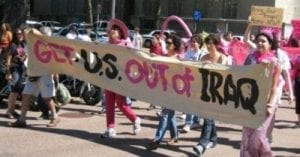
The People’s Tribunal on the Iraq War: A Grassroots Tribunal Exposing the Lies and Crimes of the Iraq War
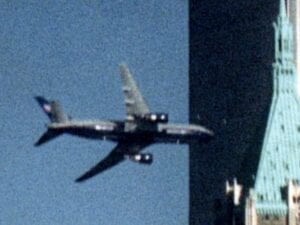
9/11 Consensus Panel Studies Refute NIST Claims
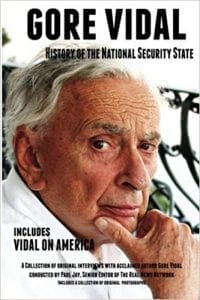
‘Gore Vidal: History of the National Security State’ is Published
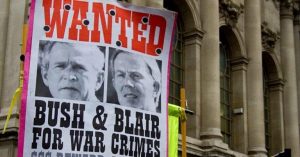
George Bush, Tony Blair, Cheney, Rumsfeld and others Convicted of War Crimes by Malaysia Tribunal

Tech “guru” Michael Connell, Following a Deposition about His Knowledge of 2004 Presidential Election Fraud and Set to Testify, Dies in Plane Crash
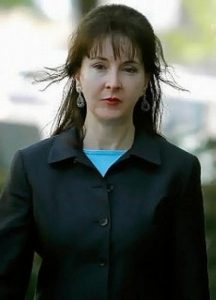
DC Madam, Escort Agency Owner, Threatening to Expose Political Clients, Found Hung
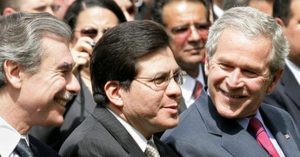
Franklin Scandal #2? Bush Fired Several U.S. Attorneys to Cover up a Pedophile Ring Being Run out of the D.C. Hotels Involving Congressmen, Senators and Reporters!
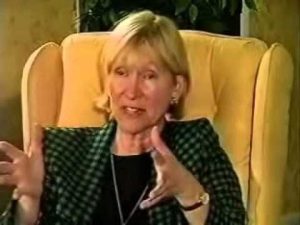
Kay Griggs, former Wife of Marine Col. George Griggs, Tells All About Military Assassin Squads, Drug Running, Illegal Weapon Deals And Sexual Perversion in Government
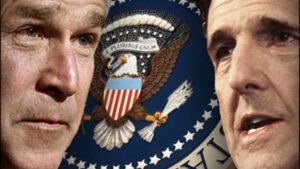
2004 US Presidential Election: The Skull and Bones Candidates
